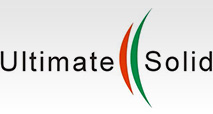A few days ago, Maersk CEO Schweitzer Jr. said in an interview with the media that the further consolidation of the container shipping market seems to be in crisis. The world may eventually have five to six large container ship companies.
In an interview with the Financial Times, Shi Shouren disclosed: “In the past two years, in the containerization sector, 8 of the top 20 large shipping companies have been acquired or will continue to face bankruptcy. During the year, large shipping companies will further integrate."
The bankruptcy of Hanjin Shipping was the biggest disaster for the entire container sector in the past 30 years. After that, Hapag-Lloyd acquired the Chilean South American ship, DAF acquired Oriental Sea King (US President's ship), COSCO and China Shipping.
Excluding the overcapacity of the container sector and driving the decline in freight rates has caused many shipping companies to face financial difficulties, Mr. Szohrin said that the merger of container shipping companies is also driven by the “Government withdraw support for container plate industry” such as the Middle East, Singapore and South Korea. .
The Maersk Line, the world's largest container carrier and shipping company under the Maersk Line, announced on December 1, 2016 that it plans to acquire Hamburg Süd, the German container shipping company. On March 14, 2017, Maersk Line announced that it was with Hamburg South America. The parent company, Oetker Group, has entered into a sale and purchase agreement. According to the agreement, Maersk Line will purchase Hamburg South America for 3.7 billion euros. Maersk Line will use cash for the acquisition. The relevant funds will be obtained through syndicated loans. The current acquisition is in progress.
The support of the container ship company team is driven by the demand for further market equilibrium. It aims to restore the sustainable economic recovery of the shipping companies and reduce the gap between the ship's tonnage supply and demand.
According to the rating agency Fitch, once the world’s five largest container giants stabilize their market position through mergers or acquisitions, their market share is likely to rise from 45% in 2016 to 57% by 2018.


